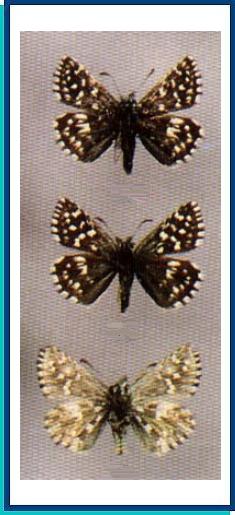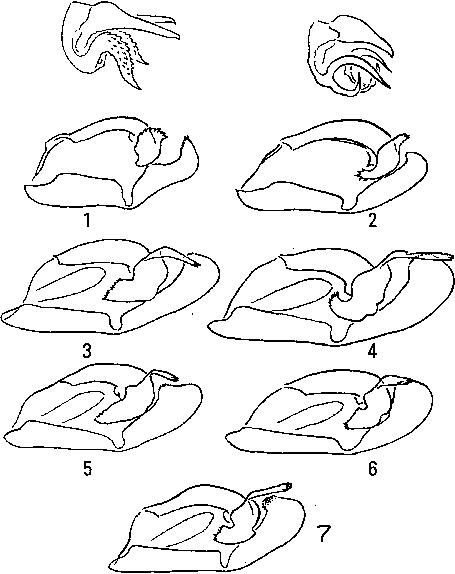LEPIDOPTERA
H E S P E R I I D A E Latreille, 1809
PYRGUS Hubner, [1819]
Pyrgus malvae (Linnaeus, 1758)
Pyrgus malvae (Linnaeus, 1758)

• TYPE LOCALITY. "Alandinsein" [Aland Island, S. Finland].
• SYNONYMS: fritillarius Poda, 1761; fritillum [Dennis et Schiffermuller, 1775]; minor Esper, [1779]; sao Bergstrasser, 1779; althaeae Esper, [1783]; fritillum Fabricius, 1787; alveolus Hubner, [1803].
• RANGE. Almost the whole of Europe (except for the extreme north and the W. Mediterranean region) through the temperate areas of Asia to Korea and Japan.
• DISTRIBUTION AND VARIATION. The S. European part, Dzhungarsky Alatau, Zailiisky Alatau, Saur and Tarbagatai Mts., Siberia from the Ural and Altai Mts. to the Ussuri region. The pattern of UPS and UNS spotting is variable, individual variation masking the geographical one. Most of the geographical range is occupied by the nominate subspecies, but the Ussuri region by the ssp. kauffmanni Albert!, 1955.
• TAXONOMIC NOTES. The status of mcdvae is still unclear. Some authors, such as de Jong (1972, 1987), consider it as a superspecies with the semispecies mcdvae (Linnaeus, 1758), melotis (Duponchel, [1834]) and P. malvoides (Elwes et Edwards, 1898).
• HABITATS AND BIOLOGY. Grassy meadows, forest edges and clearings as well as other mesophilous habitats up to 2,000 m a.s.l. in the mountains. Flight periods: April-June and July-August in two generations; in the north and in the mountains, with a single, summer generation. Host plants in Europe (Eckstein, 1913; de Jong, 1972): Rosaceae (Comarum, Potentilla, Rubus, Fragaria, etc.); pupation in leaves tied together at the base of the plant. Pupae hibernating.
• SIMILAR SPECIES. P. melotis ponticus: genitalia different (Fig.).
Photo and text: Guide to the BUTTERFLIES OF RUSSIA and adjacent territories Volume 1. PENSOFT, Sofia - Moscow. 1997

1 - P. malvae malvae (Sumy Reg., Ukraine);
2 - P. melotis ponticus (Armenia);
3 - P. centaureae (Aktash, S. Altai);
4 - P. sibirica (Aktash, S. Altai);
5 - P. alpinus alichurensis (SE. Pamirs);
6 - P. darwazicus celsimontius (E. Pamirs);
7 - P. cashmirensis pumilus (Shugnansky Mts., W. Pamirs)